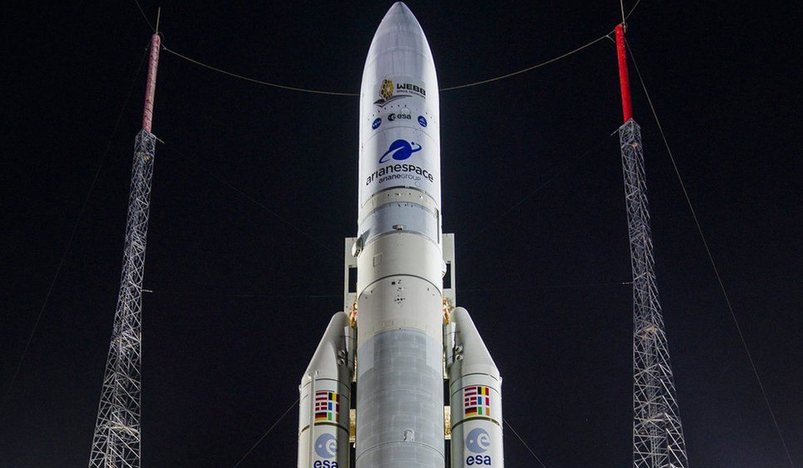
NASA
The biggest space telescope ever conceived is scheduled to go into orbit in the coming hours.
The $10bn James Webb Space Telescope will be launched on a European Ariane rocket from French Guiana.
It's a project that has taken 30 years to design and build and is regarded as one of the grand scientific endeavours of the 21st Century.
Webb's goal will be to try to image the very first stars and galaxies to shine in the Universe.
It will also have the power to probe the atmospheres of distant planets to look for gases that might hint at the presence of life.
Lift-off from the equatorial Kourou spaceport is timed for 09:20 local time (12:20 GMT).
The anticipation is high, but so too is the level of anxiety.
To get to space, Webb must first survive a 27-minute ascent on what is, in effect, a controlled explosion.
The telescope then has to unfold itself in a series of complex deployments, all of which must be completed flawlessly or the observatory as a whole won't work.
"Webb is an extraordinary mission," said US space agency administrator Bill Nelson.
"It's a shining example of what we can accomplish when we dream big. We've always known that this project would be a risky endeavour. But, of course, when you want a big reward, you have to usually take a big risk."
The James Webb telescope is named after one of the architects of the Apollo Moon programme, and the space agencies of the US, Europe and Canada, who are all partners on the project, regard it as a science flagship of no less importance.
Webb's mission is to build on the discoveries of the Hubble Space Telescope, which, after 31 years in orbit, is nearing the end of operations.
Webb will look deeper into the cosmos and, as a consequence, much further back in time.
At the core of the new facility's capabilities is its 6.5m-wide golden mirror.
This remarkable reflecting surface, allied to four super-sensitive instruments, should enable Webb to detect the light from the pioneer stars. These objects are theorised to have ignited more than 13.5 billion years ago.
"They will be just little red specks," said Nasa senior project scientist and Nobel Prize winner John Mather.
"We think there should be stars, or galaxies, or black holes maybe beginning at 100 million years after the Big Bang. There won't be many of them to find at that time but the Webb telescope can see them if they're there, and we're lucky," he told BBC News.
Source: BBC
.jpg)
Qatar Secures Place Among the World's Top 10 Wealthiest Nations
.jpg)
Hamad International Airport Witnesses Record Increase in Passenger Traffic

Saudi Arabia: Any visa holder can now perform Umrah

What are Qatar's Labour Laws on Annual Leave?
Leave a comment